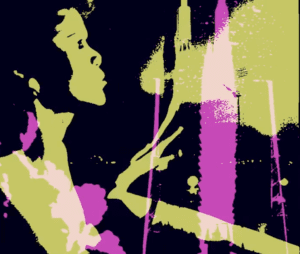How we frame things matters. We pay attention and crop in on that which is important. We narrow our view to prune and add clarity when there is too much clutter. The clutter may be important, but we can only process so much at one time. The abundance of information at every moment requires us to pick and choose that which is in frame to amplify a message, and that which we relegate to the periphery. It is our context—our framing—that forms our perspective and shapes our perception. The following is an anecdote about the importance of framing and how a designer is never off the clock and always learning from the world around them.
Last weekend our family went to a cabin, joined by members of our extended family. All together we were seven people in a small cottage — one bedroom, one bathroom. We were bumping into each other and there was no quiet to be found. Looking back on the images I took; you would never know it.
I managed to carve out some calm for myself through my camera’s viewport. A split second of sublime simplicity in the chaos, editing the world around me to capture a fleeting moment in time.


It got me thinking about what I chose to crop out and why. I thought about the incongruity between the story these pictures tell and the reality of the situation in which they were taken. As as life is our teacher, I thought about how this informs what we do, often intuitively, in design and communications work.
These images were taken minutes apart on a fishing boat with an iPhone. My son was in front of me chatting about lures while firing an endless stream of questions to the gentleman kind enough to be our captain. Hiding out of frame were fishing rods, the chaos of casting and landing fish, other boats, cottages, and us. Presented in frame, the serene undisturbed lake that expressed a seemingly untouched natural environment.
Our brains catalog and organize the meaningful objects in a visual scene, creating groupings and associations until the set of ideas is paired down to a handful of components. A camera sees everything but not all of it is useful. A fishing pole or a person in the frame would have told a different story. Maybe a more interesting story even, but the important thing is that it would have been distinctly different.
Being mindful about an image or design’s purpose helps maintain clarity which furthers the intensity of its impact. A poster design with too much text or a logo with too many visual elements is less memorable than one that emphasizes the most valuable information and deemphasizes the extraneous. Fewer things to consider leaves fewer ways to be confused or distracted. A confusing message requires our brains to recategorize and process the meaning when a clear message without distractions is easier to understand and recall.
A camera relies on its operator to make decisions about what to include in any given photograph. These pictures are nothing to write home about, but their purpose is clear. Their story is one of simplicity. I subconsciously framed this little memory for myself. Just a tiny bit of calm and peace in a busy weekend full of people, noise, and thankfully, lots of fish! It is a good reminder to be mindful of that which we frame and how it colours our perceptions.
—Julianna


